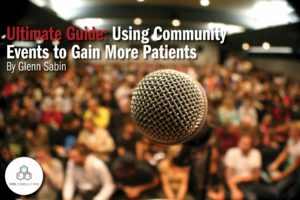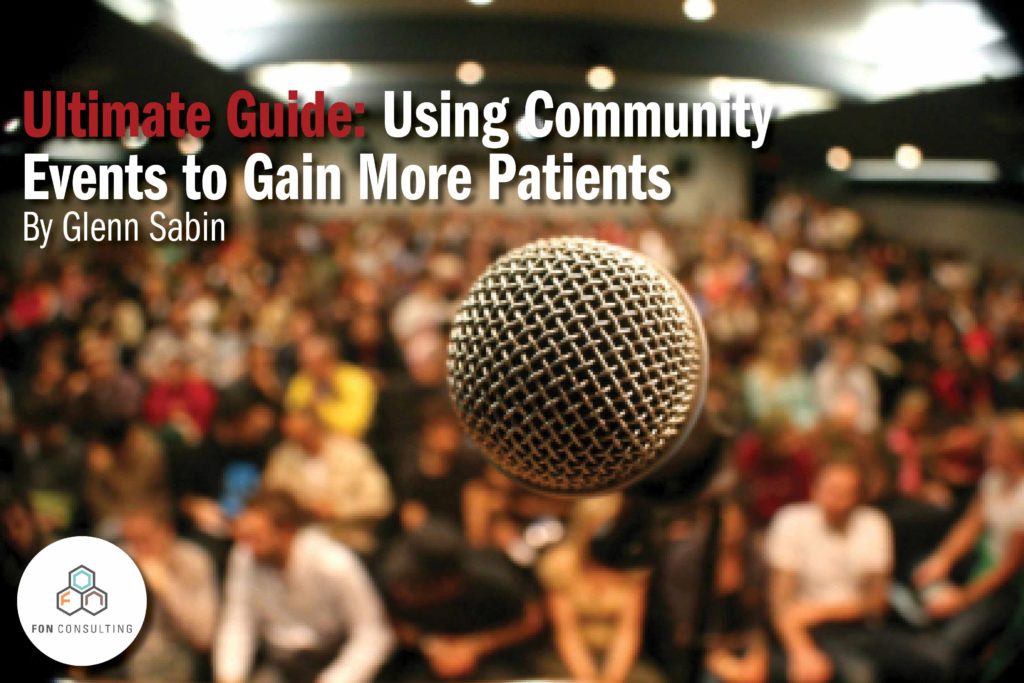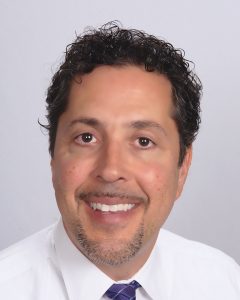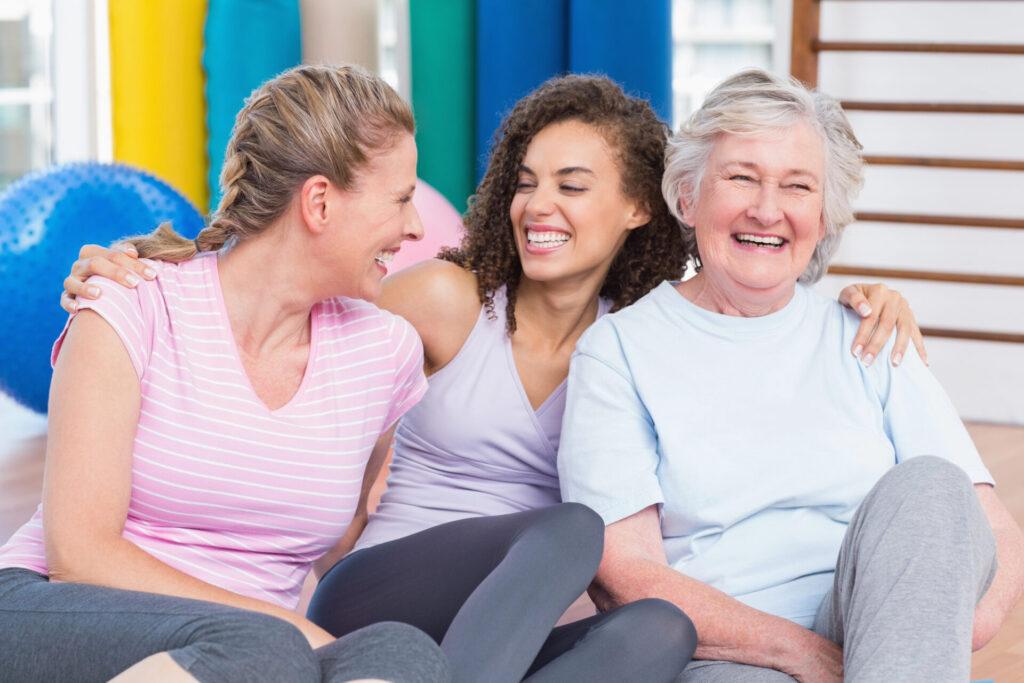 Live presentations are the most powerful communication medium.
Live presentations are the most powerful communication medium.
Nothing touches people like an ‘in-person, living, breathing, experience’. Whether it’s sports, music or … yes, even health and medical information—LIVE (done well) will always engage more than books, television programs, or websites.
In-Person, Community Events to Gain More Patients
Successful integrative and functional medicine solo practitioners, practices, and centers that know their stuff inside-out have an incredible amount of passion and confidence for their specialty, and share another significant commonality: consistent community outreach and education.
However, currently, only a small percentage of providers access and activate the power of live talks. Therefore it presents an amazing opportunity to break through the overused advertising mediums, and authentically connect with your local community of prospective clients in a deeply personal and meaningful way.
Community Outreach + Live Education = Trust and New Clients
Next to word-of-mouth referrals, community outreach, when effectively delivered, can be a primary driver of new patients.
Consider, for a moment, that integrative health and functional medicine is still quite new for the majority of the population; it’s also new to many conventionally-trained clinicians, administrators, and medical students.
Fast-track your presence in the next sixty-days by following some of these community outreach marketing concepts.
Programming Your Lecture Series
Create a single event, or a weekly or monthly series of lectures—you can call them health seminars, summits, town halls, or lunch-and-learns—each targeted to a single modality or condition in which your expertise is superb, and for which the unmet public need is significant:
Modalities
- Acupuncture
- Therapeutic Massage
- Mindfulness-Based Stress Reduction
- Yoga, Pilates
- Nutrition
- Exercise
- Biofeedback
- Sleep Hygiene
- Dietary Supplements (functional approach, labs)
Conditions
- Integrative Pain Management
- Blood Sugar Regulation
- Reversing Diabetes
- Reversing Heart Disease
- Hormonal balancing
- Managing IBS
The aforementioned ideas are the tip of the iceberg—start with your core area(s) of expertise, and advance from there.
Solo practitioners and integrative and functional clinics specializing in specific conditions can focus on their niche. This can be incredibly powerful. Multi-practitioner integrative clinics can focus on a theme, and the role each practitioner may play for a specific condition, or take a broader approach, perhaps over a longer duration. The point is, all practices can customize live format programming to their advantage.
Introduce Your Center and Discussants
Begin each lecture—seminar, discussion, town hall, lunch-and-learn, whatever you choose to call it—with a short introduction about you and your practice or center. Introduce your staff and colleagues, and anyone else who will be addressing the audience.
Your community outreach efforts may feature you as a solo practitioner, and that’s perfectly fine. If you attract a large enough audience you can engage a host to help manage various on-site aspects of the event, including introducing you as the featured speaker.
Tell Your Audience What will be Covered and What to Expect
And of course, you will thank folks for investing the time to attend. Then explain the basics of what your program or lecture will cover, and how it will be actionable (solutions) for their needs (problems):
- Storytelling clinical cases (de-identified, of course).
- The evidence that supports your presentation and recommendations.
- How specific interventions are uniquely administered in your clinical setting.
- Demonstrations (as applicable).
- Q&A session.
- An opportunity to meet the speaker(s) and clinic staff after the lecture.
- Explanation of your service model: ex. insurance, direct pay, concierge/membership, hybrid.
Endless Programming and Demonstration Options
High-quality educational content can be shaped to appeal to a larger audience, or can be tightly targeted.
Depending on your practice type, goals, and audience size, you can be incredibly creative in energizing your audience, and involving them as participants, in myriad ways.
For large or small groups you could provide mats and towels and introduce the audience to yoga or Pilates. Or forego the mats and towels and offer a mini Tai Chi class. You could even dim the lights and lead a deep relaxation breathing demonstration.
For smaller groups, acupuncture sessions or cooking demonstrations can be incredibly effective for engagement. When it comes to developing high-quality content for your lectures, the topics are almost endless.
Potential Local Speaking Venues
Your own center or clinic which will limit the potential audience size to your largest available space.
- Hospitals or medical centers.
- Self-insured employers.
- Grocery stores like Whole Foods, or indie health food markets and/or cooperatives.
- Gyms or sports clubs.
- YMCA
- Libraries.
- Rotary International club locations.
- Chamber of commerce facilities—or a location of one of their members.
- Community centers/senior centers.
Marketing your Lecture Series
There are myriad ways to promote your integrative or functional medicine lecture series or single event. Here are a few:
Your website
Call out your upcoming event or series on your homepage, in your events calendar, and make sure any event partner(s) do the same.
Mailing list
Hopefully you are growing an email list comprising existing clients/patients and prospects. Perhaps your event partner(s), if applicable, have e-lists much larger than yours. Promote your event as part of your newsletter, or solo as targeted promotional communication through your email marketing system, a la MailChimp, Constant Contact.
Media tie-ins
Getting ‘earned’ media—actual media coverage—is terrific. Another option is to secure an appropriate local media sponsor (radio, print, web) to cross-promote your series to their audience, therefore securing a far wider reach.
Attractive flier or postcard
Distribute these at your local health food stores, spas, gyms, and community centers. Direct mail is expensive, but can be considered as a test in smaller quantities.
Social media
Communicate your event or lecture series in a consistent manner across your social media communities, with an emphasis on the high-quality, outstanding programming and participants.
Third party promotion
If you are fortunate enough to have philosophically aligned organizations and colleagues willing to get the word out about your event or series, then, of course, ask them for help.
Meetups
Create a Meetup to bring together a local community of folks interested in wellness, and integrative and functional medicine. Meetups are face-to-face gatherings originating from a managed online forum.
Event Partnerships
Establishing relationships with partners who have large followings, or piggybacking those with existing events, such as well-established retreats, runs-for-causes, or pre-marathon events, can make for a cross-promotional marketing panacea. (Also see ‘sponsors versus partners’ section below.)
Facebook Events and Eventbrite—The Dynamic Duo
Though I’ve mentioned social media as a fundamental area to tastefully promote the educational value of your event, I want to emphasize Facebook Events and the now-ubiquitous ticketing platform, Eventbrite.
Eventbrite is the de facto event ticketing platform used by the lion’s share of today’s small to midsize event producers. The company now handles ticketing and registration for over two million live experiences each year.
If you are utilizing speaking events to convert attendees to clients, Eventbrite does not charge a fee for promoting free events.
Eventbrite’s intuitive signup process and dashboard make it incredibly easy to enter and upload the details of your event.
Over 550 million Facebook users engage with Facebook Events each month. That’s an enormous audience that cannot be ignored.
Opportunities to promote your event through organic boosting of posts and targeted advertising exist via Facebook Events and Facebook Ad Manager.
Ticket sales from Facebook Events can also be tracked with unique URLs when using Eventbrite’s Publish to Facebook button, which also auto-magically populates your event details.
Even if you do not have a modern website, utilizing the combo of Facebook Events and Eventbrite can be more than adequate to successfully promote your event or lecture series.
I encourage you to download Eventbrite’s e-book, How to Use Facebook Events to Sell More Tickets. This guide covers best practices on how to use Eventbrite and Facebook; it also provides guidance on various reporting options.
Here’s a link to Eventbrite’s informative Facebook Events on-demand webinar.
Sponsors Versus Partners
It’s important to emphasize and clarify the role and opportunity of a sponsor versus a true partner.
A sponsor—say a media outlet, venue, or food brand—may provide some goods or services in exchange for a presence at your event; they may even distribute their goods to your attendees. A media outlet may simply insist on having their logo placed on your marketing efforts.
A true partner will get a higher level or perhaps an equal billing to yours, but it will not create a competitive situation. This is because you have chosen to work with a well-aligned brand, but not one that competes with yours.
The best partner relationships are complimentary; both parties leveraging their respective communities, and all communication and promotional assets—lists, social media platforms, calendar listings, media connections—to create a more dynamic event or series than could have been created by one brand or entity alone.
I encourage you to look for both sponsors and partners. It’s magical to work with well-aligned organizations that have a larger platform and community than yours. Over time, as your community reach grows with even larger audiences, so will your patient panel and customer base.
Converting Attendees to Patients and Clients
Let’s say you followed the aforementioned steps to successfully attract a significant audience for your event. But what’s it all worth if you cannot convert this engagement on-site to patients or clients? Not much, right?
Getting your name out there in the community you serve can certainly lead to new patients, clients, and other opportunities over time. But it’s also critical to show some return on investment more quickly, converting business both at your event and within the first few days following the event.
In order to achieve this, you need to tell event attendees what action you want them to take. A direct call to action and clear value proposition, typically in the form of promotion or discount, must be devised to convert your enthralled event-goers to customers.
Here are a few promotional options to consider. Be creative. Determine what the best option(s) are for your practice or business, and to best serve the needs of your event attendees.
You can make all promotions valid only for commitments made on-site (during the event), or give folks a few business days to decide.
- Sign up for 20 minute no-charge physician consult ‘Bonus Service’ such as a free acupuncture or massage session with the commitment of membership, or paid (direct-pay) new patient physician consult.
- Earn a discount of X on a la carte service(s), or a service bundle, valued at Y.
- Enjoy a gift certificate for dietary supplements valued at X for the purchase of Y.
- Receive a membership discount of X, and/or refer a new patient for membership and get a discounted Y, or complementary service such as an acupuncture or massage session. (Applicable to membership-based practices.)
Follow-up with Attendees
The day after your event, send an email through your email marketing system, or via Eventbrite, thanking attendees for their presence.
Recap your promotions/offers and deadlines, using concise calls to action.
This is also the ideal opportunity to make past registrants aware of your next event and topic within the series.
Eventbrite’s platform also connects to Survey Monkey, which is a terrific option to collect attendee feedback. Just be careful not to ask folks to consider or take action on more than one thing at a time. The collection of survey data may be secondary to converting past registrants to patients or customers. This may necessitate splitting up your efforts to multiple, well timed communications.
You Can Do This
You don’t have to be a local celebrity physician or have a major center backing you with capital to create a high-quality, experiential educational event or seminar series.
The point of community outreach and programming is to raise awareness of integrative health or functional medicine approaches around a specific topic. Yes, you want to ‘sell’, but in order to tastefully do so you must provide exceptional value.
Providing content that ‘connects’ will help differentiate your brand from all other medical service providers, because you are actually inserting yourself into the community you serve, and delivering substantive value—therefore earning trust.
You do not have to follow all of these steps to be successful in creating quality live programming and converting a percentage of attendees into wildly satisfied clients and patients. Success is achieved by simply customizing and applying the parts and pieces that make the most sense for your unique situation.
Get started now, because there’s never been a better time to “go live” and touch someone!






